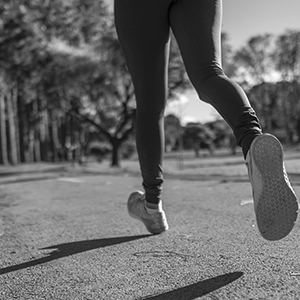Suppression of tumorigenicity 2 after exercise: a systematic review

Accepted: July 12, 2021
All claims expressed in this article are solely those of the authors and do not necessarily represent those of their affiliated organizations, or those of the publisher, the editors and the reviewers. Any product that may be evaluated in this article or claim that may be made by its manufacturer is not guaranteed or endorsed by the publisher.
Authors
Exercise is a pivotal physiological activity, associated with benefits. Whilst the importance of physical activity is consensual along different steps of the cardiovascular (CV) continuum, there has been interest in assessing the CV adaptations to vigorous exercise. Indeed, exercise can be associated with increases in cardiac biomarkers, though the scope of this observation remains elusive. Interleukin 1 receptor related protein, Suppression of tumorigenicity 2 (ST2) is a biomarker related to the pathophysiology of fibrosis, having shown promise in the study of heart failure. Knowledge of ST2 kinetics could improve understanding of the mechanistic pathways related to CV adaptations to exercise. To assess the current state-of-the-art concerning ST2 levels after exercise in healthy individuals. A systematic review was carried out on three databases (Pubmed, ISI Web of Science and Scopus), up to October 2020, using the queries “ST2” or “ST-2” + “exercise” or “running”. A total of six studies were included in the review, encompassing 349 subjects (73% male gender) in which ST2 was assessed. Most studies reported increases in ST2 levels after exercise. Three studies, encompassing a total of 219 individuals, described a cut-off level of 35 ng/dL for ST2. In these, 92.7% of subjects had ST2 levels above this cut-off after exercise (running in all studies). Most studies report increased levels of ST2 after exercise, with an important number of individuals exceeding the 35 ng/dL threshold. Given the small number of individuals represented and the lack of imaging data and long-term follow-up, further prospective larger studies should target this.
How to Cite

This work is licensed under a Creative Commons Attribution-NonCommercial 4.0 International License.
PAGEPress has chosen to apply the Creative Commons Attribution NonCommercial 4.0 International License (CC BY-NC 4.0) to all manuscripts to be published.
Similar Articles
- Rita Intravaia, Benedetta De Chiara, Francesco Musca, Francesca Casadei, Gloria Santambrogio, Francesca Spanò, Oriana Belli, Giuseppina Quattrocchi, Cristina Giannattasio, Antonella Moreo, Primary mediastinal large B-cell lymphoma and pregnancy: a challenging clinical scenario , Monaldi Archives for Chest Disease: Vol. 92 No. 4 (2022)
- Devika Tayal, Prabhpreet Sethi, Prerna Jain, Point-of-care test for tuberculosis: a boon in diagnosis , Monaldi Archives for Chest Disease: Vol. 94 No. 1 (2024)
You may also start an advanced similarity search for this article.

 https://doi.org/10.4081/monaldi.2021.1839
https://doi.org/10.4081/monaldi.2021.1839




